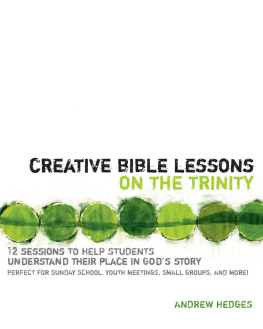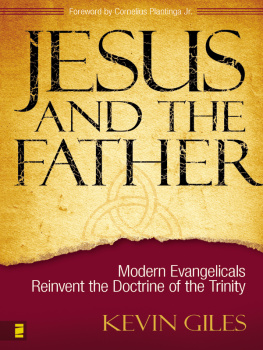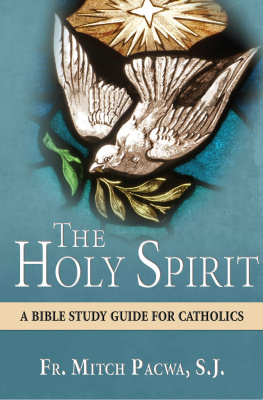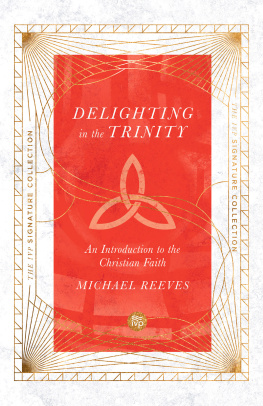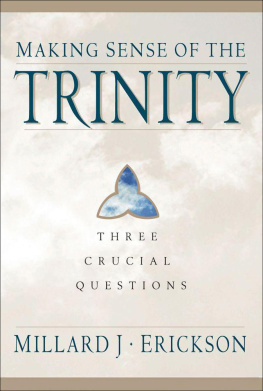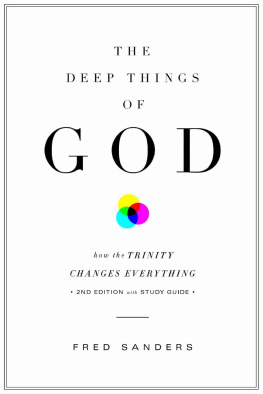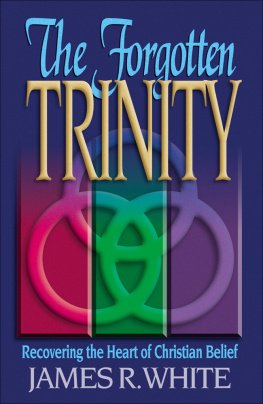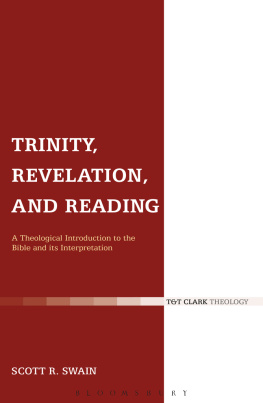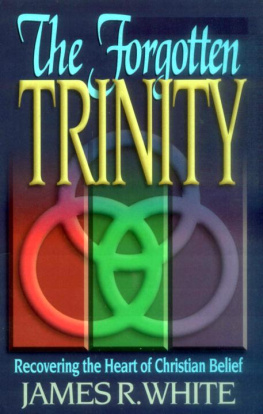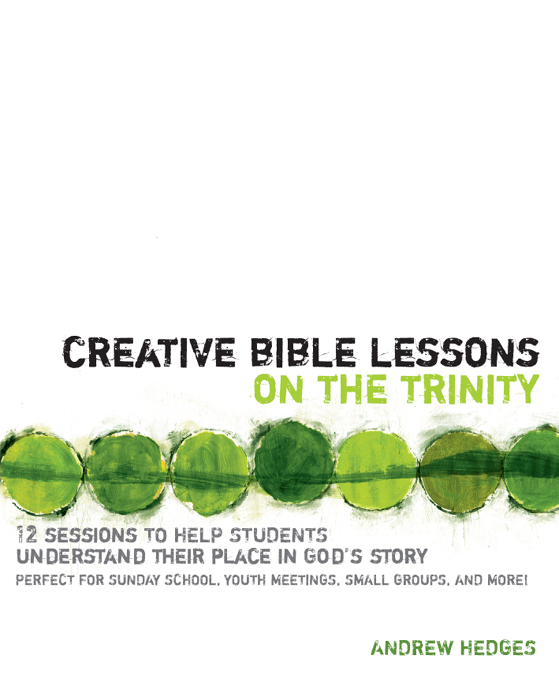To our one and only GodFather, Son, and Spirit. You are all our hope and peace.
PREFACE
THE TRINITY AND TEENS

We are human; therefore we value relationship. Its as if we were wired for it from the beginning of time. We are miserable in isolation. All we ever seem to want is to feel like we belong. It doesnt matter whether we are children, adults, or teenagers. We value relationship. We crave it. We need it.
When we consider who God is, we begin to understand why we value relationship. We actually have been wired this way from the beginning of time. If we were created in the image of God, then God himself must be a relationship. British theologian Alister McGrath puts it this way: When you are explaining what Christianity is all about to your interested friends, you neednt mention the word Trinity at all. You speak to them about God, and about the way in which God has revealed himself to us and reconciled us to himself through Jesus Christ. But if you were to sit down and start thinking about the question What must God be like if he is able to act in this way? you will end up with the doctrine of the Trinity.
God exists as a TrinityFather, Son, Spiritequal in nature yet distinct in expression. The very nature of God is relational, and the very heart of God is for relationship.
In our churches we sometimes promote critical study (knowing about) over relationship (knowing). Yet at the heart of Christianity is a relationshipone of knowing and being known by God. We can and should begin with Jesus, but our thoughts and discussions eventually should go deeper. For many teens going deeper raises many doubts and fears that they desperately need to work through in order to be truly rooted and established in the love of God.
The passion behind this book is to move beyond a superficial understanding of a relationship with God without losing the intensity of the relationship. The more clarity we have in how God himself exists in relationship or community, the better our understanding of his desire and our need for a relationship with him. We may have doubts and fears, but our deep relationship with our triune God will see us through.
My intent in writing this book is to have it flow like a conversation. With each session teens should learn more about God and more about themselves. As the story of God unfolds, so does our story. Perhaps a helpful overview would sound something like this: The God who is three-in-one (Session 1) has spoken and revealed his desire to have a relationship with us (Session 2), and he has initiated a plan to make that happen (Session 3). God himself miraculously came to earth (Session 4) to live as a perfect human (Session 5), die in our place (Session 6), and be raised from the dead (Session 7) to give us hope that we can be in a relationship with him as part of his family (Session 8). As he works in our lives, we are changed more and more into his image (Session 9) and begin to look like him (Session 10) and live like him (Session 11) as the representation of his heart and mission for the world (Session 12).
Of all our relationships, the one we have with God the Father through Jesus Christ in the power of the Holy Spirit is the most amazing gift we could ever hope to receive. Teens may understand this whether they know God or not. All humanity has a desire for intimacy, and teens are in a developmental stage of heightened social awareness and longing for belonging. We all can find true satisfaction in a relationship with our Creator. And if this is true, then it leads us to the questions: What must God be like if we who are created in his image are so wired toward relationships? What does it mean for us that our God is so relationally defined in his very essence? Use this book to introduce your teens to the God who is three-in-one.
Praise to the Father, Son, and Spirit,
Andrew A. Hedges
Alister E. McGrath, Understanding the Trinity (England: Kingsway Publications, Ltd., 1988), 115.
INTRODUCTION
MAKING THE MOST OF THIS STUDY

PHILOSOPHY: LEARNING
HOW YOUR TEENS LEARN
In order to understand how to most effectively use this book, its important for you to know the teaching philosophy behind it. In the same way, in order to teach your students effectively, you need to know how they learn. In her book Learning Styles: Reaching Everyone God Gave You to Teach, education specialist Marlene LeFever provides insight into how people learn. For the purpose of understanding the book in your hands, the following paragraphs from LeFevers book will provide a basic understanding of the terms. (Note: The icon that appears next to each description will be used throughout this book to designate activities that fit that particular learning style.)
IMAGINATIVE LEARNER

Imaginative Learners are feeling people who get involved with others and learn best in settings that allow interpersonal relationships to develop. These curious, questioning learners learn by listening and sharing ideas. They see the broad overview or big picture much more easily than the small details. They learn by sensing, feeling, watching. They can see all sides of the issues presented.
ANALYTIC LEARNER

Analytic Learners learn by watching and listening. They expect a teacher to be the primary information giver, while they sit and carefully assess the value of the information presented. These are the students who learn in the way most teachers have traditionally taught, and so they are often considered the best learners. They are strategic planners, and they aim for perfectionthe right answers, the As in school and in life. These learners want all the data before they make a decision.
COMMON SENSE LEARNER

Common Sense Learners like to play with ideas to see if they are rational and workable. These students want to test theory in the real world, to apply what has been learned. They love to get the job done. They are hands-on people who, using their own ideas, can analyze problems and solve or fix them. Common Sense Learners, as the name suggests, excel when dealing with what is practical and of immediate importance to them. They learn best when learning is combined with doing.
DYNAMIC LEARNER

Dynamic Learners also enjoy action as part of the learning process, but rather than thinking projects through to their rational conclusion, Dynamic Learners excel in following

